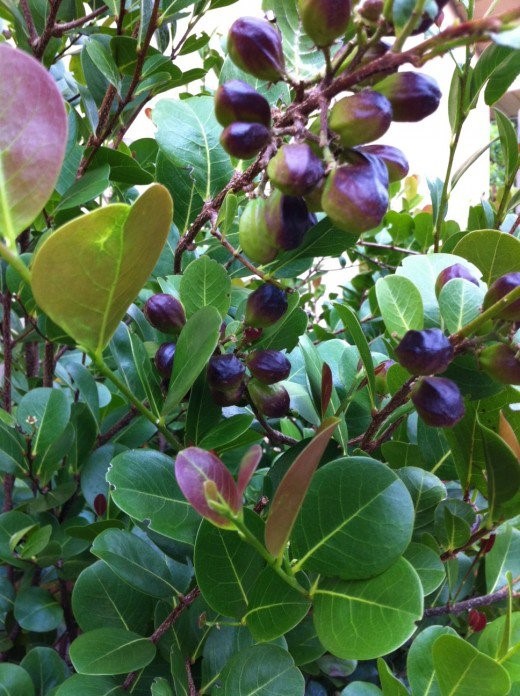Native to South Florida, cocoplum (Chrysobalanus icaco ‘Red Tip’) is a common plant species found throughout Sanibel Island. The cocoplum is an outstanding texture plant with a “beachy” look. Also known as the Paradise Plum, this plant species can be found near the coastal beaches and inland throughout tropical Africa, tropical Americas and the Caribbean, in southern Florida and the Bahamas.
The cocoplum is an easy to care for plant that can be used in a variety of different landscape situations. They serve as terrific hedge shrubs or privacy plants, with a typical height of 4 feet but the ability to grow up to about 15 feet tall if allowed. If allowed to grow a little less manicured, their natural, rounded shape fits in perfectly in a casual landscape scene. Trim as needed, with hard pruning in spring if you need to control the plant’s size. You can shear this shrub with hedge trimmers for a more manicured appearance or branch trim for a natural look.
Their rounded, shiny green leaves are set off by red-tipped new growth on the most commonly sold variety. Cocoplum tends to grow best in a full to partial sun location, though these shrubs will grow in shadier areas of the yard. Moderately salt tolerant, these plants need the warmth of Zone 10 to thrive and are evergreen unless winter is harsh. There is a “horizontal” cultivar which can be grown as more of a groundcover shrub and is more salt-tolerant than “Red Tip” cocoplum.
The plant produces small white flowers, followed by fruit that is pink and ripens to purple. The clustered flowers are small, greenish-white, and appear intermittently throughout the year but more abundantly in late spring. In the Caribbean islands of Trinidad and Tobago, jam is sometimes made from the fruit.
This plant column is a joint effort by all at In The Garden, Sanibel’s garden center located at 3889 Sanibel Captiva Rd., Sanibel, Florida.
